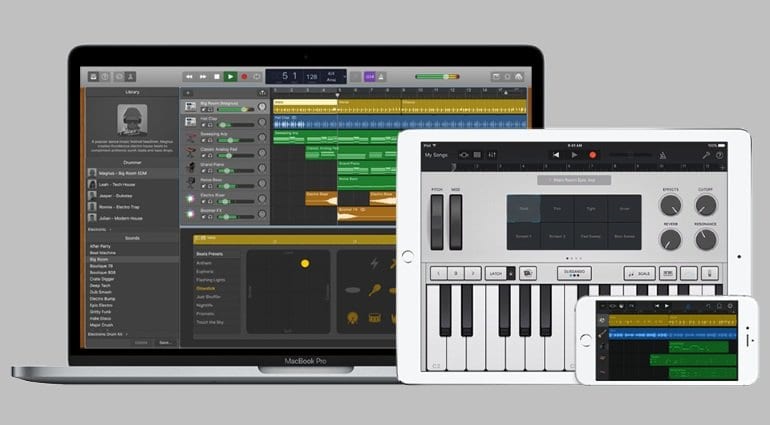

SIDE NOTE: You can play the song by clicking on the Play button on the bottom of the screen next to the red "record"circle, and quickly go to the beginning of the song by clicking on the "Start from Beginning" button.

Now you have a song/track ready to listen to and edit. You'll see the beats (1, 2, 3) at the top of the screen. To do move a track to a specific time/beat, click anywhere on the song's track OTHER THEN the far left (you will see that would expand the track rather than move it) and move/drag it to the left so the song would begin at beat 1. Now, drag the song anywhere onto the portion of the screen in the middle where it says "Drag Apple Loops here." Now, you're going to want to move the song all the way to the left so it begins to play sound as soon as you preview the track. To use a song, click once on a song you want to use. You can listen to & preview your downloaded songs simply by clicking on the song, clicking the play button below the library, and then stopping the song by once again clicking the play (stop) button. So, if you already know you'll move those big folders to another drive or partition after the GarageBand installation, you can extract them using Pacifist (and the above hint) instead of installing everything and then delete the thousand files (over 1.8GB) from your original partition (probably causing some disk fragmentation).Now, with your entire iTunes library open, decide what songs you want to edit, loop, merge, etc. Okay, now, I'm not 100% sure that was the only difference (in file permissions) that cause the problem so basically, you should be sure to exactly "imitate" all the (sub)files and (sub)folders permissions of the original GarageBand folder inside /Library/Application Support. So, I used my application -) "Chop" ( to change that with a simple drag&drop operation.and now everything works perfectly. Extracting that folder with Pacifist caused those files to be set as "rw-r-r-" (644). and found out for example that all the 1106 files inside the "Apple Loops for GarageBand" folder, should be set as "root:admin rw-rw-rw-" (the chmod "octal" equivalent is 666). I had the opportunity to check them in a "normal" and functional GarageBand installation. Okay, I found what was wrong: file permissions.

Instrument\ LibraryReplace DiskName with the name of the hard drive holding the directories, and replaced Path with the names of any subdirectories between the hard drive and the location of the loop files.GarageBand should launch and your loops should be visible by clicking the eye icon on the bottom. Apple\ Loops\ Index % ln -s /Volumes/DiskName/Path/Instrument\ Library/. Apple\ Loops % ln -s /Volumes/DiskName/Path/Apple\ Loops\ Index/.


 0 kommentar(er)
0 kommentar(er)
